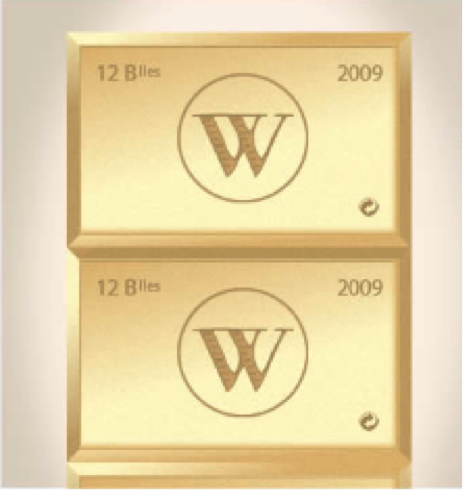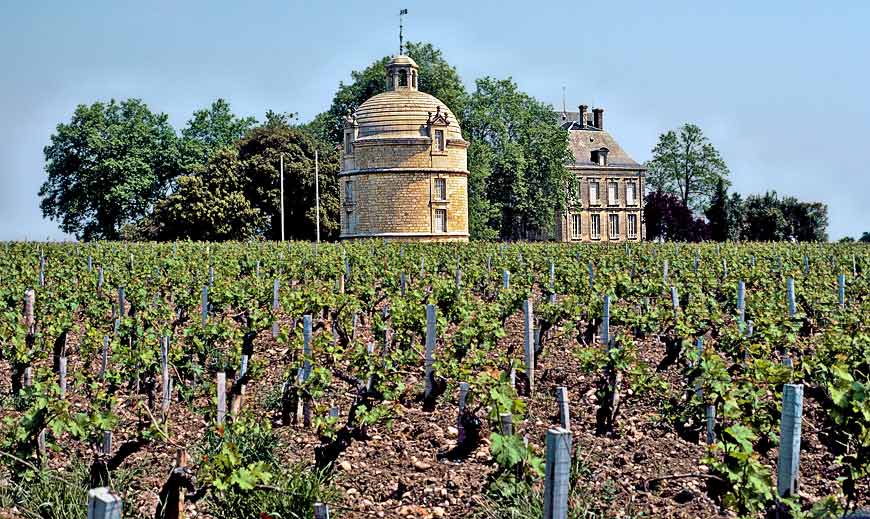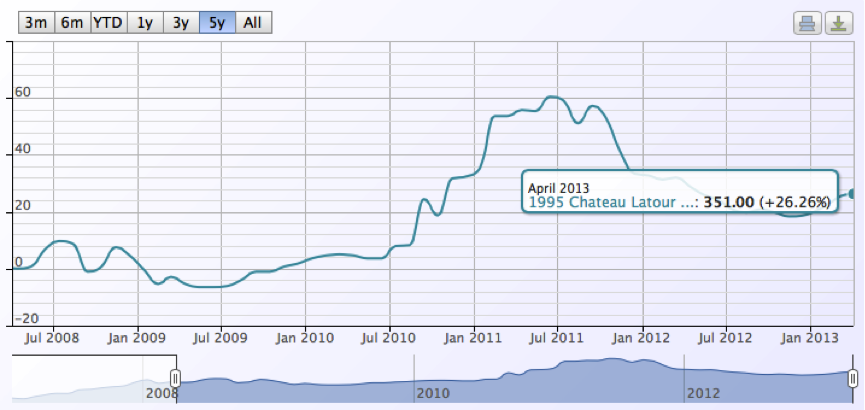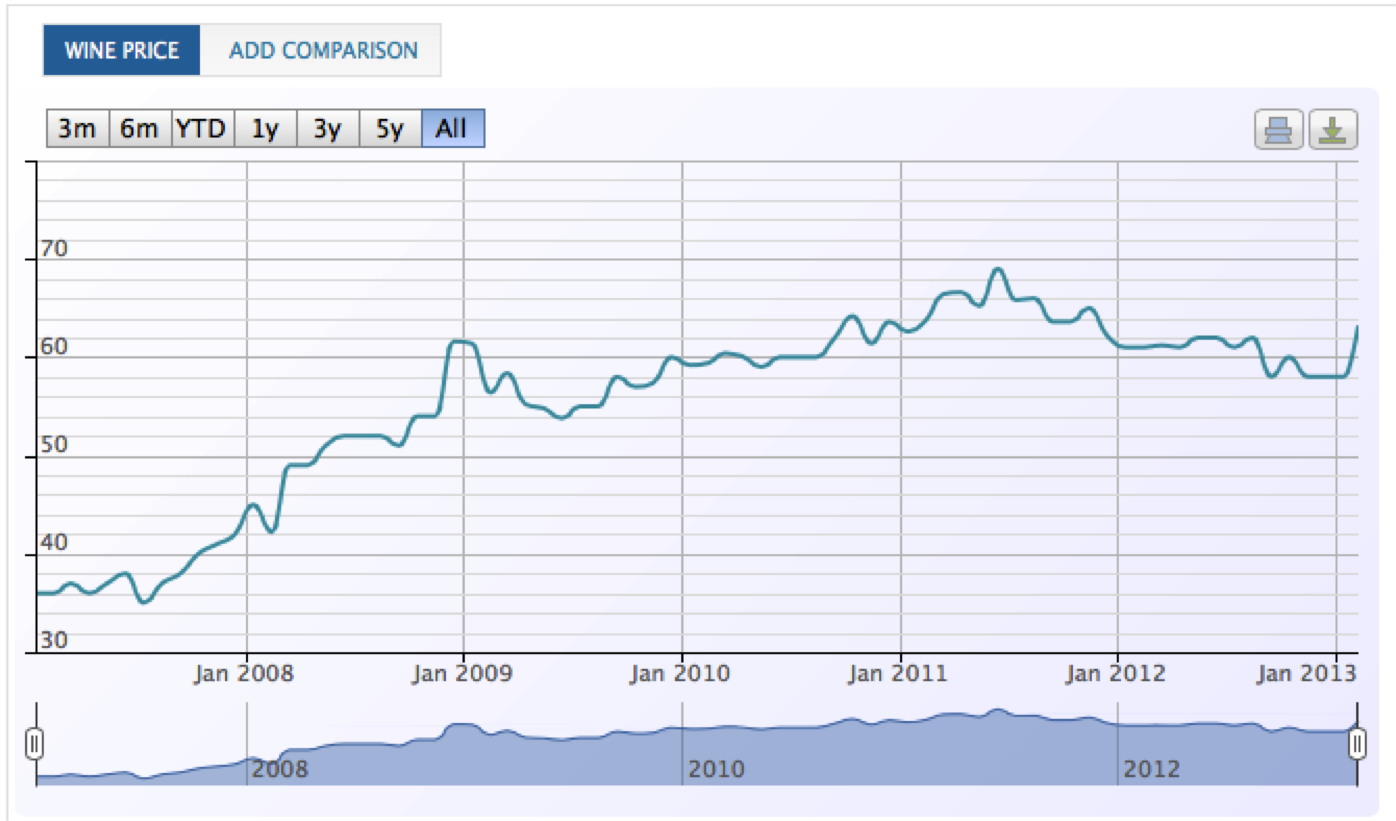by Wine Owners
Posted on 2013-05-03

Wine is a classic collectible asset.
Fine wine differs from stocks and shares in that it does not produce an income and it is not fungible. In this it shares common characteristics with other collectible classes such as art, stamps, coins, cigars and classic cars.
Fungible is another way of saying ‘interchangeable’. Cash is fungible; one £20 note having equivalence with any other note of the same value. Pure gold is also fungible, a gram being interchangeable with any other gram.
In contrast, diamonds are not perfectly fungible because varying cuts, colors, grades, and sizes make it difficult to find many diamonds that are exactly alike. Diamonds illustrate the point that fungibility is not the same as liquidity or scarcity. A global market can nonetheless exist and thrive irrespective of whether an asset class is perfectly fungible or not.
Neither is fine wine perfectly fungible, notwithstanding the contrary views of Joe Roseman, the investment economist who coined the phrase SWAG for Silver, Wine, Art and Gold.
Similarly, typically over time, one case of a particular wine of the same vintage loses its ability to be treated as interchangeable with another, due to variables such as storage location (and implied quality of condition), tax status (held under bond or duty paid), back or strip labels (denoting its original export destination e.g. China) and packaging (e.g. original wooden case or a repack).
Non-fungibility creates market pricing variability. To illustrate the point from another collectible segment, cigars stored at Dunhill in Mayfair are thought to carry a premium at auction houses; such is the excellent reputation of their humidor.
The growing globalisation of the fine wine market over the last decade, with the opening up of the Far East and Russian markets, and the future potential influence of Brazil, India and other emerging regions, has shone a spotlight on the importance of wine provenance – being the term used to describe history and current condition.
The question of how good is a wine’s provenance arises directly from the fact that wine is not fungible. The top estates (typified by the Bordeaux First Growths) are gradually adopting technological innovations that could help in future. Everyone agrees that provenance can only become increasingly important.
Where the wine is stored, how long it’s been kept there undisturbed, where it’s been and the distance it’s had to travel; are all more pertinent questions than ever before.
A new system of building and tracking provenance is surely needed, where older stocks can be traced back, through transfer of title, movements, location changes and inspections.
Traceability and reliability of source will increasingly justify higher prices for the best stock, and lead to a disparity of value or market liquidity between two bottles or cases of the same wine.
There is already a widening gap between older wines sourced direct from the producer compared with secondary market stocks in those cases where history cannot be proved.
It is well worth the investment in time to seek out secondary market stock with good provenance, in order to assure your fine wine purchases can serve as an effective store of value. Greater market transparency is surely the key to giving private buyers the confidence and information they need.
by Wine Owners
Posted on 2013-04-05

With updated prices released on Wine Owners' - the world's first full service, independent asset management and trading exchange - it's an opportune time to check on the market price of Chateau Latour 1995.
Why? Because having withdrawn from the en primeur release system in April 2012, Latour director Frederic Engerer had announced that each year a vintage of Chateau Latour and the second wine, Les Forts de Latour, would be released at the start of their perfect drinking window.On March 19th 2013 the first of the 'library' releases, 1995, was offered at a UK retail price of (GBP) £4,950.Each bottle comes with a prooftag (a security product guaranteeing traceability and authenticity) and sports a back label stating the date of shipment from the chateau.1995 was a great vintage for Latour, as evidenced by the following wine critic reviews:
Robert Parker 96 points (June 2000)
A beauty, the opaque dense purple-coloured 1995 exhibits jammy cassis, vanillin, and minerals in its fragrant but still youthful aromatics. Medium to full-bodied, with exceptional purity, superb concentration, and a long, intense, ripe, 40-second finish, this is a magnificent example of Latour. As the wine sat in the glass, scents of roasted espresso and toasty new oak emerged. This classic will require considerable cellaring. Anticipated maturity: to 2050.
Jancis Robinson 18.5 points (2011)
Lustrous deep crimson almost right out to the rim still. Hint of mint on the nose – quite aromatic. Pretty. Charming for a Latour grand vin! Though there is a strong undertow of graphite. More intense than 1996. Drink to 2035
Lisa Perrotti-Brown 96 points (Nov 2012)
Deep garnet-brick in colour, the nose is well developed, displaying dried berry, leather, vanilla pod and anise notes with a faint whiff of potpourri. The palate is wonderfully fleshy and opulent with velvety, approachable tannins and a long finish.
Latour took criticism for their release price from some quarters arguing that that it was too high compared to market prices for previously released-en-primeur bottles of 1995.
Our analysis (Wine Owners Market Level calculation: base data sourced from Wine Searcher) shows the current market price per bottle is £351, or the rounded equivalent of £4,200 for a 12x75cl case.

As the chart shows this is down from £433 per bottle in April 2012, or the rounded equivalent of £5,200 for a 12x75cl case, showing the prolonged tough time first growths have endured since hitting their giddy heights in the summer of 2011.
So is a £700 case market premium for an ex chateau release with perfect provenance and a prooftag worth it?
Yes, according to Lisa Perrotti-Brown MW who believes a 15% premium is worth paying to source that perfectly stored and shipped wine.
And that, funnily enough, is precisely the premium that Latour decided to place on the 1995 library release.
by Wine Owners
Posted on 2013-03-25
Thank you everyone who's been using our fine wine asset management and trading exchange since November 2012 when it first released.
As a result of all our fantastic feedback, we've just released a brilliant new version, providing quick answers to questions such as:
- how much have I spent to date;
- what’s a wine honestly worth if I wanted to sell it tomorrow; how have my wines performed;
- what should I drink now or drink up;
- what do I have too much of and what should I think of selling next to make room for what I’d like to buy next?
With this new release, Wine Owners provides answers to all those fundamental questions and a lot more besides, and is available now via complimentary subscription here.
by Wine Owners
Posted on 2013-02-17
We're being asked increasingly how Wine Owners arrives at its Market Level pricing, helping to provide a benchmark for real-world valuation of wine collections for its private client users.
So here's how we process millions of data points to give our users pricing insight on their fine wine collections that they can translate into estimates of realisable current market value, less sales commissions.
The source of data comes from WineSearcher, the world's pre-eminent search engine for fine wine, helping wine enthusiasts everywhere to source wines they wish to buy from retailers.
Retail pricing is collected from over 34,000 wine merchants and traders around the world, and this data can be analysed by country and region.

WineSearcher's scope of work is huge, processing millions of data points on wines that are for sale or just sold every day.
How does Wine Owners work with this primary data source?
Our proprietary algorithms process this data to eliminate the inevitable anomalies that such large data sets present. We focus on pricing for the world's top 250,000 fine wines.
For our private client members who appreciate, collect and invest in the fine wine top end of the market, our focus on a specific strata of fine wine pricing enables us to structure, standardise, format, analyse and process these wines in great depth.
How does Wine Owners calculate the Market Level?
We first exclude possible outliers from the source data.
Next we recognise the different liquidity characteristics of the fine wine market and assign a liquisity score to each wine in our database.
Rare wines, old vintages and other wines with limited liquidity are treated differently to incoming streams for top Bordeaux where there is substantial relative market availability and demand.
We then analyse the spread between market low and mid point for each wine and calculate the point between the two, depending on liquidity scores, that constitutes the Market Level.
Our proprietary algorithms are designed to give you the most consistent approach to pricing a market in wine.
Of course, wine is a collectable asset very unlike stocks and shares or gold, and therefore market prices reflect differences in geographical availability and tax status, not to mention condition and history (the essential elements of 'provenance'. What that means is that pricing fine wine is not a wholly scientific process, and a consistent approach such as ours will not capture every market discontinuity. Nevertheless Wine Owners offers users a rigorous approach to calculating Market Level pricing, being a likely pricing level at which your wines can sell without undue delay.
The following price graph, a new version of the existing functionality on https://www.wineowners.com , illustrates the pricing information and interactive site tools you can use to manage your wine collection.

We value based on the market retail value, and therefore you can expect to deduct selling commissions from this price.

